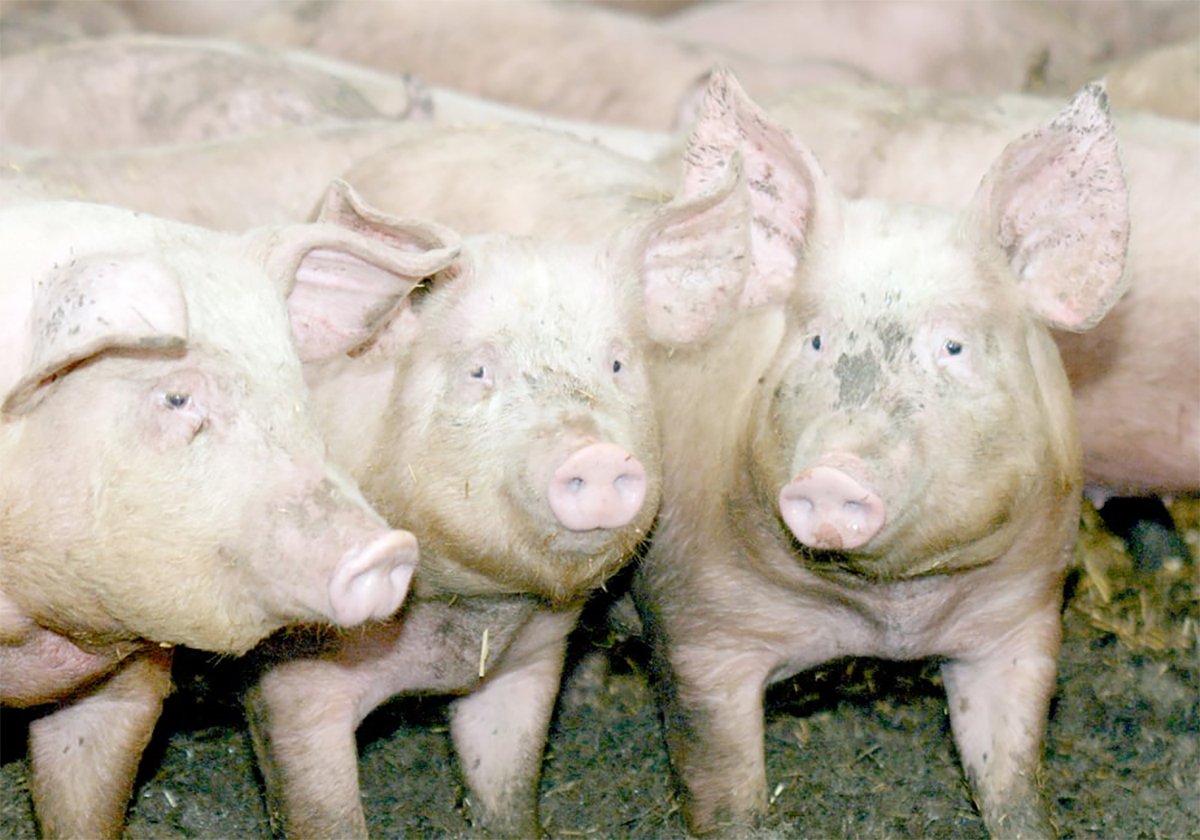BEARSPAW, Alta. – One of Canada’s elite dairy farms can be found between the soaring Rocky Mountains and the glow of Calgary’s city lights.
Known as Rocky Mountain Holsteins, the dairy is on a 100-year-old farm where milking cows has always been a major part of the operation.
Yet this is no ordinary dairy.
It is an elite collection of 250 head of show cattle, embryo donors, recipients and bulls in a three way partnership of David Chalack, Doug Blair and Glenn Hockley, who merged their herds to create one superior set of dairy animals.
Read Also

The Western Producer Livestock Report – October 2, 2025
Western Producer Livestock Report for October 2, 2025. See U.S. & Canadian hog prices, Canadian bison & lamb market data and sale insight.
“We all owned cattle all over Canada in groups and individually,” said Chalack, who is a veterinarian and vice-president of product development for the semen company Alta Genetics.
Two years ago at the Royal Winter Fair in Toronto the three decided to form one company and share all assets.
“We would own everything equally and strive to be the best,” Chalack said.
The group brought experience and international connections.
Blair had started Western Breeders, which through a variety of acquisitions became Alta Genetics. Hockley is a former Manitoba farm boy who works in the oil and gas business. He approached the Chalack family many years ago when he wanted to return to the dairy business.
The three signed a five-year lease agreement with Chalack’s mother, Margaret, who owned the farm, formerly known as Ultra Holsteins. She bought the place in 1954 with her husband Sam, who was named a master breeder in 1984 and owned the first registered embryo transfer bull calf registered with Holstein Canada.
While Calgary and major acreage developments shadow this farm with its original prairie wool pastures, the partners plan to remain on the site as long as possible.
“We have a long-term plan and we certainly believe we’ll be here in 10 or 15 years,” Chalack said.
After two years, the farm has already made a name for itself, winning two out of eight milking classes at the most recent Royal Agricultural Winter Fair in Toronto, which the partners considered a coup because of the large, prestigious herds found in Ontario.
Last July the farm had its first production sale, called Rocky Mountain High, where the high selling animal was a $60,000 heifer. The 130 lots averaged $7,400.
The farm has agreed to share the sale in alternate years with Morsan Holsteins of Ponoka, Alta. The next sale, called Morsan Mountain High, will be July 6.
One animal that is not for sale is Rocky Mountain Holsteins’ superstar cow, Irwindale Leduc Macy, a white dappled Holstein that is Canada’s highest scoring dairy female with a rating of 95 out of 100.
This rating is based on physical appearance and conformation under the guidelines of Holstein Canada.
Imported from Wisconsin as a young heifer before BSE closed the borders in 2003, Macy is also highly rated for milk production.
Its daughter, Macy Durham Micky, could be the next superstar.
With superior cows like these, the group wants to create a brand name reputation for owning the best Holsteins in the world.
While many dairy farms sell all bull calves, this farm keeps about 20 percent of the males and all the heifers. The culled males are put on feed and are ultimately sold for beef.
Semen is used from the most highly rated bulls and genetic material is bought at home and abroad to build the best cow families.
The partners do not intend to build a large herd, instead focusing on quality.
“We are somewhat more of a boutique or a specialty herd that creates genetics for the next generation,” Chalack said.
While cattle can’t move into international markets at this time, Chalack said that is not a bad thing.
“The cost of freight with fuel and moving live animals is just so costly, whereas you can put 300 embryos in a tank and send it to Europe for $500,” he said.
“The market for embryos will be strong and will continue to be strong. You look at Russia and China, where there is huge growth opportunities.”
Last year, Rocky Mountain Holsteins sold embryos to Europe and Japan.
It also helps to have solid international connections that stem largely from the farm’s connection with Alta Genetics, which has sold semen and embryos throughout the world.
As well, Chalack and Blair were involved in a program to train international technicians and veterinarians in embryo transfer in the late 1980s and early 1990s. These students are now returning as customers.
While the farm is fancier than most, basic animal husbandry and cow selection is the same as other farms.
A staff of three looks after milking as well as cow health and comfort.
The cattle receive top quality feed, which the farm buys because its land base is not large enough for wide scale hay production.
The cows rest on sawdust and straw bedding. They walk on rubber floor mats to prevent lameness and can go outside for exercise. When the farm was remodeled, stalls were enlarged for cow comfort so they could get up and lie down with ease to avoid feet and leg injuries.
“If cows can’t walk, they not going to go to eat and convert feed to milk so udders, feet and legs remain the main conformational criteria that people need to focus on,” Chalack said.
Commercial cows do not need to be as big as show cattle but must have strong, athletic legs for mobility so they can rise and lie down easily and must develop good udders to produce high volumes of milk.
“It is milk that day in and day out is the paycheque for everybody.”

















